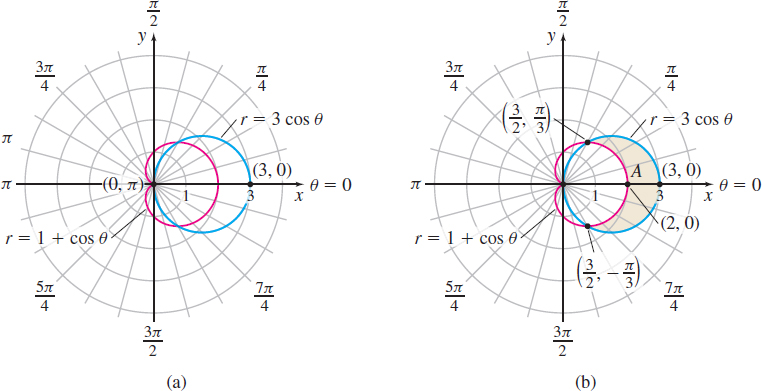EXAMPLE 5Finding the Area of the Region Enclosed by the Graphs of Two Polar Equations
Find the area of the region that lies outside the cardioid r=1+cosθ and inside the circle r=3cosθ.
Solution We begin by graphing each equation. See Figure 54(a). Then we find the points of intersection of the two graphs by solving the equation, 3cosθ=1+cosθ2cosθ=1cosθ=12 θ=−π3orθ=π3
The graphs intersect at the points (32,−π3) and (32,π3).
The area A of the region that lies outside the cardioid and inside the circle is shown as the shaded portion in Figure 54(b). Notice that the area A is the difference between the area of the region enclosed by the circle r=3cosθ swept out by the rays θ=−π3 and θ=π3, and the area of the region enclosed by the cardioid r=1+cosθ swept out by the same rays. So, A=∫π/3−π/312(3cosθ)2dθ−∫π/3−π/312(1+cosθ)2dθ=12∫π/3−π/3[9cos2θ−(1+2cosθ+cos2θ)]dθ=12∫π/3−π/3(8cos2θ−1−2cosθ) dθ=12∫π/3−π/3[8(1+cos(2θ)2)−1−2cosθ]dθ=12∫π/3−π/3[3+4cos(2θ)−2cosθ] dθ=12[3θ+2sin(2θ)−2sinθ]π/3−π/3=π
